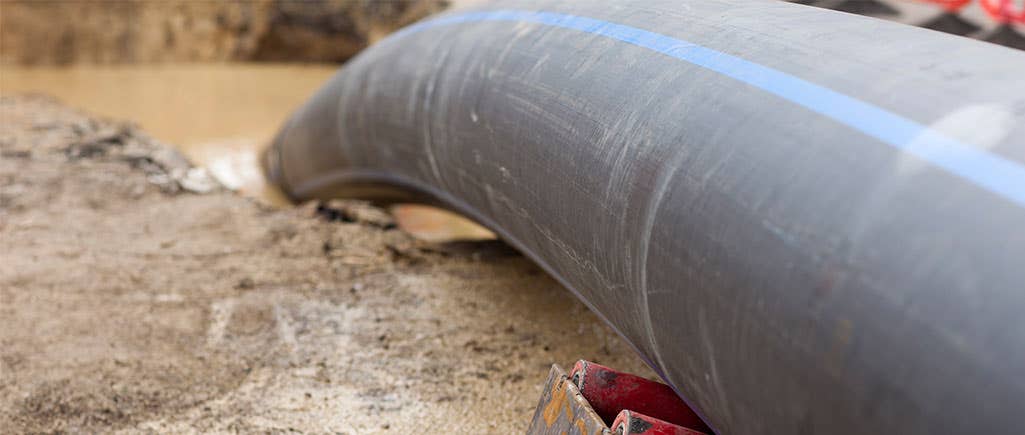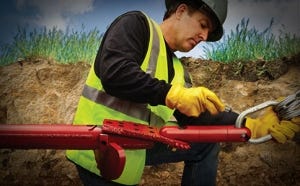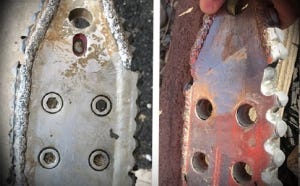
By: Ryan Preddy, General Manager & Chris Pudlak, Engineering/Product Manger, DCD Design & Manufacturing Ltd.
Breakaway connectors are must-have components in your HDD operation, especially when pulling sensitive products like fiber optic cables or gas lines. Some drillers mistakenly believe that the product they are pulling is undamaged, simply because there is no damage visible. However, placing pipe under excessive amounts of strain can compromise the integrity of gas lines and fiber optic cables, even if the damage isn’t immediately obvious. Gas companies and other utilities often require the use of breakaway connectors to protect plastic pipes being installed by HDD. While this may seem like an unnecessary burden, top HDD drillers recognize that breakaway connectors save them money by ensuring that pipes are installed correctly and that there won’t be any costly surprises during inspection.
Breakaway Connectors Provide Additional Protection
Modern HDD drill rigs have more power than ever before. But that extra power means that plastic pipe can be at risk of damage from stretching. The best protection for your installed pipe is good drilling technique, using the right HDD reamers, and good drilling mud. Breakaway connectors provide an additional layer of protection. When a breakaway connector is placed between the pullback swivel and the duct pulley, it protects polyethylene ducting from overloading, due to its design. The connector itself is a 3-part product, each component held together by a group of pins that are designed to break in tension at a specific load.
The Golden Rule of Breakaway Connector Pins: “One and Done”
A mistake that some HDD drillers make is re-using pins because they can’t see any visible damage or simply want to save a buck. Ostensibly, if you can confidently maintain loading conditions under the preload values during normal use of the tensile pins, fatigue will be minimized and the pins can be re-used. However, this is rarely the case in the field. Shock loading or spikes in load can cause damage to the pins, most of which is not obvious. Therefore, re-using these damaged pins will most likely cause them to fail prematurely. Replacing the pins after each pull is a good practice that will save you money in the long run.
Proper Use is Always Your Best Bet
It’s always a good idea to use products with specs that have been proven to stand up to your drilling conditions. Take the time to learn about different load capacities and the best breakaway connector for your conditions before beginning a new project. DCD has produced a series of short videos showing the capabilities and proper set-up of our breakaway connectors. Always follow directions carefully when inserting your pins. Improper placement can create an uncentered load that stresses your connector and can lead to premature failure.
Select Tools Designed for HDD
There are multiple types of tools available to help monitor and control pullback loads during drilling. When using a breakaway swivel, be sure to use those that are designed for underground work, since they have been tested to perform well under conditions unique to HDD. DCD manufactures the 00570 series breakaway swivel, which features an integrated breakaway end. By combining the breakaway end with a swivel, you can keep the number and length of connections in your pull to a minimum. Digital Controls (Digitrak) manufactures the Tensitrak system, an electronic pressure monitoring system that alerts drillers to changes in downhole mud pressure. The more ways you can protect the pipe you’re pulling, the better. Use of a breakaway connector is a smart way to protect your HDD equipment and ducting, giving you and your utility customer confidence that the pipe you installed will pass inspection and be ready for use the first time. If you have questions or need advice, contact your Melfred Borzall distributor who can discuss which breakaway connector will be best for your job.




